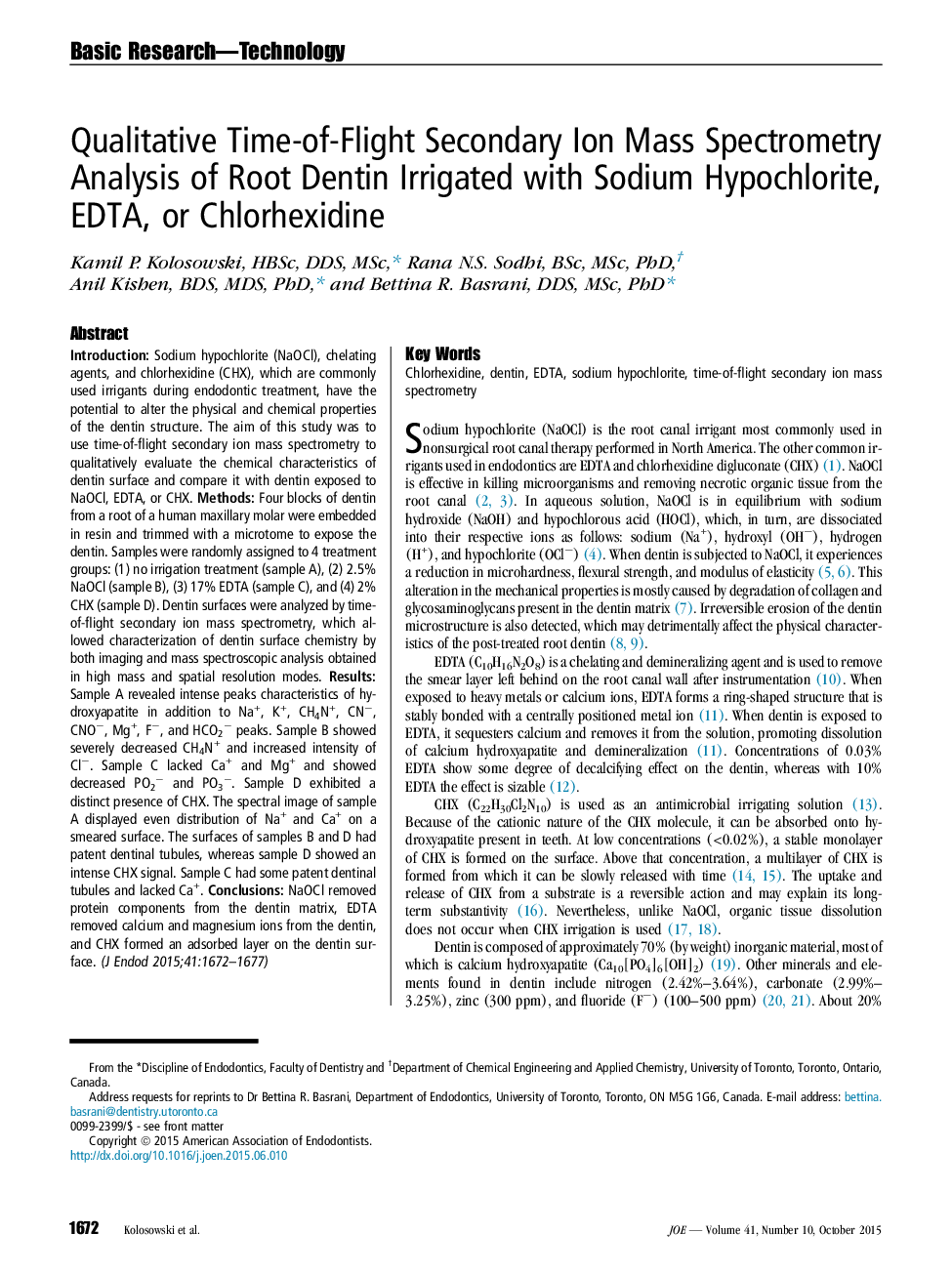| کد مقاله | کد نشریه | سال انتشار | مقاله انگلیسی | نسخه تمام متن |
|---|---|---|---|---|
| 3148068 | 1197387 | 2015 | 6 صفحه PDF | دانلود رایگان |

• Time-of-flight secondary ion mass spectrometry of untreated dentin shows Na+, K+, Ca+, Mg+, CH4N+, PO2−, PO3−, CN−, CNO−, HCO2−, and F−.
• After treatment of dentin with sodium hypochlorite, a degradation of matrix protein occurs with a removal of CH4N+.
• After treatment of dentin with EDTA, Ca+ and Mg+ are removed from the dentin surface.
• Treatment of dentin with CHX leaves behind a layer of adsorbed CHX on the dentin surface.
IntroductionSodium hypochlorite (NaOCl), chelating agents, and chlorhexidine (CHX), which are commonly used irrigants during endodontic treatment, have the potential to alter the physical and chemical properties of the dentin structure. The aim of this study was to use time-of-flight secondary ion mass spectrometry to qualitatively evaluate the chemical characteristics of dentin surface and compare it with dentin exposed to NaOCl, EDTA, or CHX.MethodsFour blocks of dentin from a root of a human maxillary molar were embedded in resin and trimmed with a microtome to expose the dentin. Samples were randomly assigned to 4 treatment groups: (1) no irrigation treatment (sample A), (2) 2.5% NaOCl (sample B), (3) 17% EDTA (sample C), and (4) 2% CHX (sample D). Dentin surfaces were analyzed by time-of-flight secondary ion mass spectrometry, which allowed characterization of dentin surface chemistry by both imaging and mass spectroscopic analysis obtained in high mass and spatial resolution modes.ResultsSample A revealed intense peaks characteristics of hydroxyapatite in addition to Na+, K+, CH4N+, CN−, CNO−, Mg+, F−, and HCO2− peaks. Sample B showed severely decreased CH4N+ and increased intensity of Cl−. Sample C lacked Ca+ and Mg+ and showed decreased PO2− and PO3−. Sample D exhibited a distinct presence of CHX. The spectral image of sample A displayed even distribution of Na+ and Ca+ on a smeared surface. The surfaces of samples B and D had patent dentinal tubules, whereas sample D showed an intense CHX signal. Sample C had some patent dentinal tubules and lacked Ca+.ConclusionsNaOCl removed protein components from the dentin matrix, EDTA removed calcium and magnesium ions from the dentin, and CHX formed an adsorbed layer on the dentin surface.
Journal: Journal of Endodontics - Volume 41, Issue 10, October 2015, Pages 1672–1677